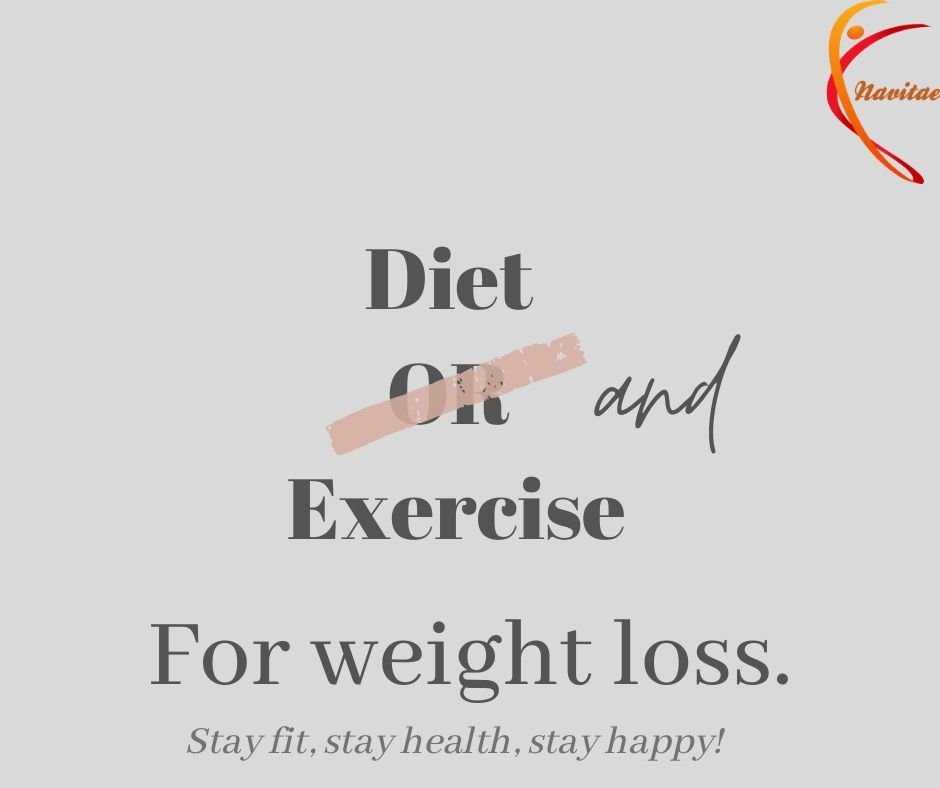
Most weight loss programs address weightloss only through diet. Most of the literature we come across says – it’s 80% diet and 20% exercise.
Nutrition is indeed an important factor in bringing weight under control. But exercising is an absolute must for weight loss and maintenance.
To understand weight loss or weight gain it is important to understand two fundamental concepts:
1. Homeostasis
2. Metabolic set point
Homeostasis is our body’s automatic tendency to maintain a constant internal body environment through various processes. This homeostasis works by shutting on or off or slowing down certain metabolic processes based on feedback from the internal systems. One example is how body maintains an internal temperature of 98.6 F.
Metabolic set point is the base rate of metabolism that body seeks to maintain resulting in Basal Metabolic Rate. Basal metabolic rate is the minimum energy required to maintain the body’s life at rest. Metabolic set point is the average rate at which the metabolism runs and results in a body composition set point. People with slower metabolism seem to store fat easily and people with faster metabolism tend to not.
Metabolic set point is influenced by diet, exercise and other factors. To reduce weight the energy equilibrium has to be altered such that the homeostasis helps attain a new Metabolic Set Point. For weight loss the energy intake has to be reduced and energy expenditure has to be increased.
There could be 3 ways of doing it:
1. Reduce energy intake by reducing intake of food (calorie deficit diet)
2. Increase energy expenditure by increasing activity (exercising)
3. Reduce intake of food and increase activity.
With the 1st option (the most commonly adopted option), the body’s metabolic set point reduces to conserve energy. It resets itself to burn lesser calories to conserve energy.
This is where exercising helps. Exercise helps to increase the metabolic rate thereby burning more fat for energy.
However, by doing the same set of exercises we cannot progress much with weight loss goals. Our body gets used to the exercises and finds efficient ways to burn lesser calories over time for the same level of exercise. So the duration or intensity needs to increase every 4-6 weeks to keep burning more fat for energy.
To bring things in perspective – body burns approximately 250-300 calories for a 1/2 hour of intense exercise. Approx 2 chapati or 1 cup daal or 1/4 th cup icecream gives us close to 200 calories. So basiwhatsappy 1/2 hour of exercising can be quickly offset if we do not keep our food intake in check.
Before I wrap up, due to the homeostasis and metabolic set point, it is easier to maintain a weight. Our body strives to maintain equilibrium. Also maintenance is easier for people who exercise, not just by burning calories but also by regulating our craving and hunger hormones. People who exercise regularly have their body working in perfect balance with their mind. I have been on maintenance for the last 10 years – you get the point 🙂 .
So the verdict- Both diet and exercise is needed for weight loss or weight gain. Exercise is an absolute must for maintenance.
If you are looking for help with your weight loss goals, we can help. Please whatsapp us at 74062-09945 or email us at customercare@navitae.com or leave us a message here.
Stay fit, Stay healthy, Stay happy !!
Ref 1: https://www.ncbi.nlm.nih.gov/pmc/articles/PMC2990627/
Ref 2: Fitness: The complete guide, ISSA course book by Frederick C Hartfield